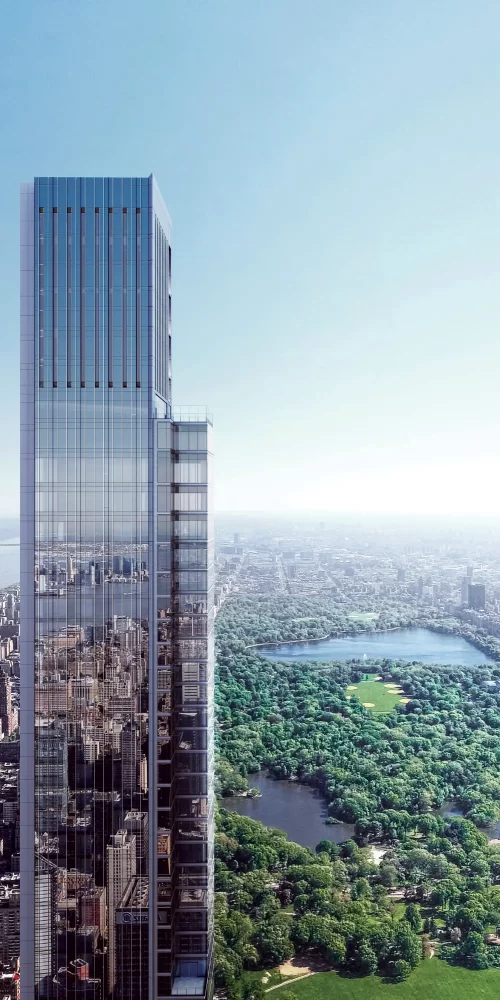Skyscraper Appreciation Day
Skyscraper Appreciation Day
Did you know that today, August 10th, is Skyscraper Appreciation day? There really is a holiday for everything! Skyscraper Appreciation Day is recognized on August 10 as it is the birthday of the famous architect William Can Alen, who is the genius behind the construction of the Chrysler Building, which is one of New York City’s most iconic landmarks. Skyscraper Appreciation Day was initiated and founded by Dr. Tom Stevens – It was created so that the general public could admire the structural and architectural brilliance of skyscrapers and man’s ability to construct industrial masterpieces!
What is a Skyscraper?
Coming across a very tall building within a city is no longer something extraordinary – with more people and less space, it’s becoming more and more prevalent to take advantage of vertical space, and build up!
Terms such as “tall building”, “high-rise” and skyscraper are often used interchangeably to describe any and all tall buildings, but there is actually a difference between a tall building and a true “skyscraper”.
Three main criteria a building must meet to be a true skyscraper are the following:
- The structure must be self-supporting and not require tension cables or supports in order to remain standing.
- The structure must have habitable floor space which occupies at least 50% of the structure’s total height.
- The Structure must be a minimum height of 150 metres (492 feet).
Check out this video from The B1M by Dan Cortese to learn a bit more about this.
The First Skyscrapers
Tall buildings and especially skyscrapers used to be something to marvel over as extraordinary feats of construction. Though they still are today – imagine how amazing the very first skyscrapers were following a time when construction of that nature and scale simply seemed impossible!
The very first range of tall commercial buildings built between 1884 and 1945 mostly located in New York City and Chicago. Economic growth in the United States following the Civil War caused increased intensive use of urban land, which made the switch from low-rise buildings to the development of taller buildings. As well, technological improvements made the construction of these buildings possible with the development of fireproofed iron-framed structures, deep foundations, elevators, and electric lighting.
 The Home Insurance Building (right) >>>
The Home Insurance Building (right) >>>
Though it wouldn’t fit into modern skyscraper standards, the first towering skyscraper of the 1800s was Chicago’s 42 meter (138 ft) tall Home Insurance Building. The Home Insurance Building was located on the corner of Adams and LaSalle Streets in Chicago, Illinois, and was designed by engineer William LeBaron Jenney. The building was supported by steel frame, revolutionary for the time, which allowed for it’s much greater height and stability.
The Home Insurance buildings was first completed in 1885, and it originally had 10 stories. During its construction, city authorities were so worried that the building would topple over that they halted construction for a period of time so that they could ensure its safety. Five years later, after being sure the 10 stories were firmly planted on the ground, 2 additional floors were added to the top, making it a total height of 55 meters (180 ft). The Home Insurance Building stood tall until 1931, when it was demolished to make way for another skyscraper, the Field Building (now known as the LaSalle Bank Building).
This achievement paved the way for a group of architects and engineers called the Chicago School who together went on to develop the modern skyscraper, though New York would later become more known for taking skyscrapers to new heights.
Rigging Through History | The First Elevators
As we mentioned above, a few technological advancements truly made skyscrapers possible. The two essential advancements were the steel frame and the safety elevator. While the development of the steel frame is widely known and covered, the development of the first elevators in sometimes undefeated and overlooked.
The first passenger elevator installed in 1857 at the Haughwout Department Store in New York, it was shut down after just three years because customers refused to accept it. At the time, elevators were more of a tourist attraction than a means of transportation. The world didn’t have many tall buildings yet, and lower floors were the most desirable because they didn’t require you to climb many stairs. At that time, higher floors were valued less, and cost less rent!
Once elevators were fully developed and excepted, an the era of the skyscraper truly began and so did the idea of the modern city. These elevators were powered by a steam engine in the basement of buildings and it traveled at a mere 40 feet per minute. (Today’s fastest elevators can travel upwards of 40 feet per second.) Though these types of passenger elevators were new for the time, the elevator wasn’t an entirely new idea. Mechanized hoisting devices had existed since the early 1800s, and essentially that system just transitioned from carrying goods to carrying people. This did, of course, require some major updates to the mechanism as these early hoisting setups were open platforms and therefore very dangerous for passengers – but all in all, elevators are essentially just a hoisting system!
This was the beginning of learning how to take basic systems like a hoisting system and make it safe, which in turn, began the social interest in safety within innovations of this nature. Industrialist Elisha Otis, who installed the first passenger elevator in New York, held a public demonstration at the 1854 world’s fair in New York where he hoisted a platform above the crown then cut the cable with an ax, showing that the platform still did not fall. His system had a safety mechanism so if the rope snapped, a ratchet would pop open and catch on racks that ran alongside the shaft, stopping descent almost immediately.
Modern Skyscrapers
Inspired by the B1M video, Top 20 Projects Completing in 2020, we wrote a blog at the beginning of the year where we dove into some of the most mind-boggling construction marvels that were set to complete this year. Amongst some of those projects, were some of the world’s tallest modern skyscrapers. Here are a few of those feats of construction!
 1. Central Park Tower, New York City, New York will be the tallest residential building in the world. (left) <<<
1. Central Park Tower, New York City, New York will be the tallest residential building in the world. (left) <<<
Once completed, this architectural landmark will be 1,550 feet tall making it the tallest residential building in the world. The building is positioned in one of the world’s most famous skylines, along Manhattan’s Billionaire Row, with a North-facing view of beautiful Central Park. Once completed the building is set to house 179 of the most exclusive homes in the world.
Designed by a top architectural firm, Adrian Smith + Gordon Gill Architecture, the tower features elements of glass, satin-finished steel, and light-catching vertical and horizontal details that are designed to accentuate both texture and light. At the base of the tower, will be Nordstrom’s first full-line department store and the building will also feature one of the world’s most exclusive private clubs, Central Park Club.
The
179 ultra-luxury two-to-eight-bedroom residences begin on the 32nd
floor of the building and range in size from 1,435 square feet to over
17,500 square feet. The sale of these residences begin this year and
start at $6.9 million..jpg)
2. Premier Tower Melbourne, Australia (right) >>>
Premier Tower is one of Melbourne’s tallest and most prestigious developments, best known for how it was inspired…by Beyonce’s music video ‘Ghost’ (yes, you read that correctly) which features dancers tightly wrapped in fabric. Designed by Elenberg Fraser, this elegantly designed high-rise sits on an island across from the city’s main train terminal. once completed this year, the building will include at least 1 million square feet of space, comprising of 780 apartments, 180 hotel suites, 78 levels, 139 car parks and a variety of communal spaces including lounges, swimming pools, gyms, and dining areas.
Mimicking the curves seen in the dancers above using glass, concrete, and steel, as you’d imagine, is no walk in the park. The building has a very slender structure, with the ratio of height to a structural width of 8.3 from the ground up, with a much more challenging 10.8 above the podium. To maintain the building’s stability while moving in the wind, mega-columns on the façade maximize the width of the stabilizing structure and these are tied to the core by two-or three-story outriggers concealed in party walls, and secondary outriggers at the mid-height plant floor. These mega-columns are sized to be able to carry both gravity and the wind’s load – which were tested extensively in a wind tunnel to ensure they would be successful in doing this.
3. Australia 108 Melbourne, Australia (right) >>>
Australia 108 is a residential skyscraper in the Southbank precinct of Melbourne, Australia. Late last year, in November of 2019, it was topped out and become the tallest building in Australia by roof height and second tallest building by full height – This makes it the highest residence in the southern hemisphere. Construction on the $900 million skyscraper commenced in October 2015 and is just getting those final touches going into 2020.
Once completed the building is set to house 1105 residential units over 100 stories. The building recently broke records for the most expensive apartment ever sold in Australia, when they sold the 750-square meter penthouse for $25 million.
Fun Fact: In the initial plans for the Australia 108 included 108 stories, but had to be reduced to 100 following concerns it would interfere with airplane flight paths – Now that’s a tall building!
Nobody describes this breathtaking feat of construction quite like it’s architect:
“Australia 108 is a highly sculptural residential tower unlike any other in Australia. Its slender form is highlighted at the Cloud Residences levels by a golden starburst expression and then morphs into a curvaceous profile against the sky. The starburst which contains the resident facilities is inspired by the Commonwealth Star on the Australian flag and is an obvious celebration of the sense of community within the building.” – Fender Katsalidis
4. PWC Tower Milan, Italy (right) >>>
Milan is known for its fashion, elegance and cutting edge architecture – And the PWC Tower fits perfectly into those expectations, if not blowing them totally out of the water. Standing at 175-metres this skyscraper designed by Studio Libeskind is slated for completion in 2020!
Dubbed, “Il Curvo” (translation: The Curved One…doesn’t sound quite as fancy) is known for the way its prismatic outline catches the eye as it leans forward into the Tre Torri Square with arching steel and glass. It accompanies two neighboring skyscrapers within Tre Torri Square, the already completed Allianz Tower, and Generali Tower.
While the buildings don’t directly match in the way one might expect, Studio Libeskind principal Yama Karim explains in an interview for AchiExpo e-Magazine, “these towers were always conceived as a group, I see them as chess pieces, in dialogue with one another. Our tower completes the composition”.
No matter how BIG or small the project – Hercules SLR is here to support you every step of the way.
Hercules SLR is your single source for cranes, hoists, wire rope, fall protection equipment and much, much more. We also provide equipment rentals and perform inspections, repairs, and certifications, at your business or in one of our fully-equipped shops. Need assistance staying safety compliant? Our experienced consultants help with risk assessment, PPE specification, hazard analysis, fall protection, and incident investigation. Other services include the design and installation of horizontal lifelines, vertical lifelines and anchor points.
Hercules SLR is your one-stop-shop for securing, rigging and lifting!
——————————————————————————————————————————————
The Hercules Group of Companies encompasses a wide portfolio of products and services across 7 diverse companies.


